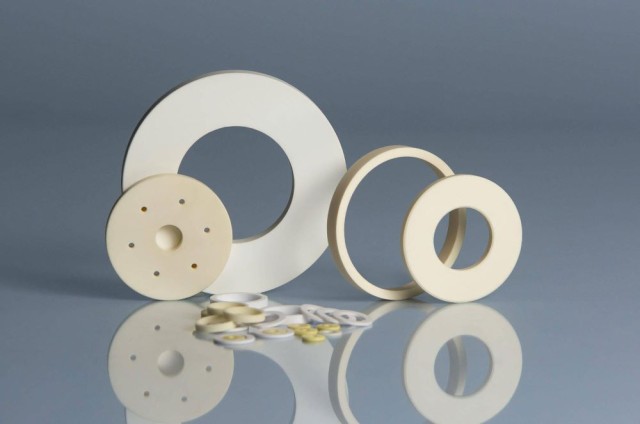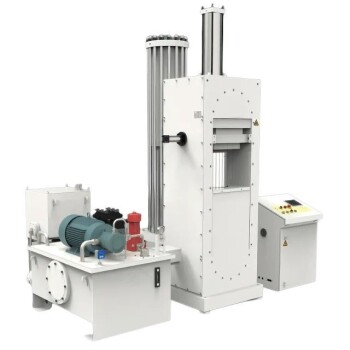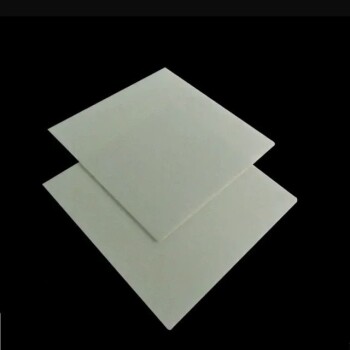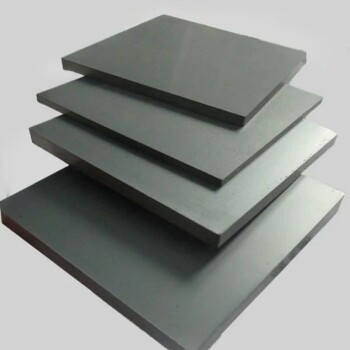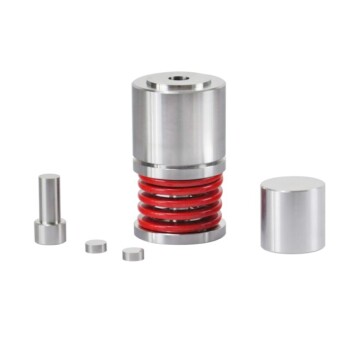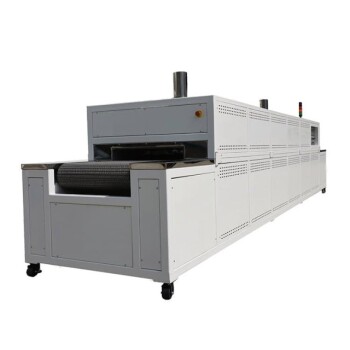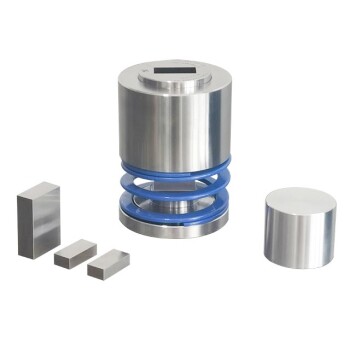Introduction to Advanced Ceramics Sintering
Sintering Methods in Advanced Ceramics
Advanced ceramics often undergo significant shrinkage, typically ranging from 20% to 25%, during the sintering process. Achieving a uniform green density during the forming stage is crucial for ensuring controlled and uniform shrinkage. Various sintering techniques are employed depending on the specific type of ceramic being processed. For instance, porcelain can be sintered in a relatively simple, low-cost kiln, whereas advanced technical non-oxide ceramics usually require precisely controlled high-temperature sintering in a stabilizing atmosphere.
Among the common sintering methods, atmospheric pressure sintering, hot pressure sintering, hot isostatic pressure sintering, and microwave sintering are notable. Hot pressure sintering stands out due to its widespread application and effectiveness in producing high-density ceramic products. This method involves heating the ceramic powder in a graphite mold while applying pressure, a process that enhances the sintering temperature and mechanical properties of the final product.
Pressure sintering, particularly for ceramics like SiAlON, follows a structured procedure:
- Slurry Formation: Mixing water, binder, deflocculant, and unfired ceramic powder to form a uniform slurry.
- Spray Drying: Converting the slurry into spray-dried powder.
- Molding: Pressing the spray-dried powder into a mold to create a green body.
- Binder Removal: Heating the green body at a low temperature to burn off the binder.
- High-Temperature Sintering: Fusing the ceramic particles at high temperatures.
By using an optical dilatometer thermal analysis, researchers can observe the expansion-temperature curve, identifying all characteristic temperatures such as phase transition temperature, glass transition temperature, and melting point. This data helps in understanding the sintering cycle of a particular ceramic formulation. Sintering is characterized by significant material shrinkage as the glass phase flows at its transition temperature, incorporating the powder structure and reducing porosity.
Sintering can be conducted under various conditions, including the application of external forces. Pressureless sintering, which uses only temperature, is often enhanced by techniques such as graded metal-ceramic composites, nanoparticle sintering aids, and monolithic molding. For 3D shapes, a variant known as hot isostatic pressing is employed, providing additional control and uniformity in the sintering process.
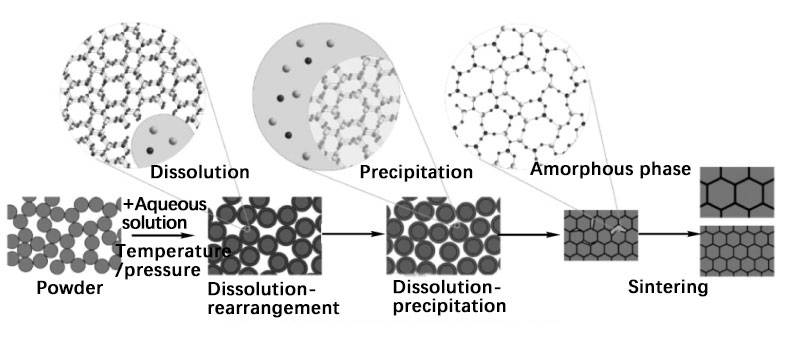
Hot Press Sintering Process
Advantages and Disadvantages of Hot Press Sintering
Hot press sintering offers several advantages that make it a preferred method for certain types of advanced ceramics. One of the most significant benefits is the reduced molding pressure required. Unlike cold pressing methods, hot press sintering operates with pressures that are approximately 1/10 of the cold pressing method. This reduction in pressure is due to the thermoplastic state of the powder, which facilitates easier plastic flow and densification. Consequently, this method can be used to form large-sized products such as A12O3, BeO, BN, and TiB2.
Additionally, hot press sintering significantly lowers the sintering temperature. By simultaneously heating and pressurizing the powder, the mass transfer processes of the powder particles—such as contact, diffusion, and flow—are accelerated. This not only reduces the sintering temperature by about 100°C to 150°C compared to normal pressure sintering but also shortens the sintering time. This temperature reduction helps in inhibiting grain growth, leading to products with finer microstructures and potentially better mechanical properties.
However, hot press sintering is not without its drawbacks. The process is inherently complex and requires sophisticated equipment to manage both the high temperatures and pressures involved. The equipment necessary for hot press sintering is more expensive and requires careful maintenance to ensure consistent performance. Furthermore, the complexity of the process limits the shapes and geometries of the final products that can be produced. This constraint arises from the need for specialized molds and the difficulty in achieving uniform pressure distribution across complex shapes.
In summary, while hot press sintering provides advantages such as lower molding pressures, reduced sintering temperatures, and the ability to produce high-density, large-sized ceramics, it comes with challenges related to process complexity, high equipment requirements, and limitations in product shape versatility.
Types of Hot Press Sintering Processes
Hot press sintering encompasses a variety of techniques, each tailored to specific material properties and desired outcomes. The constant pressure method maintains a steady pressure throughout the sintering process, ensuring uniform densification. This method is particularly effective for materials that require consistent mechanical properties across the entire part.
The high temperature pressurization method involves applying pressure at elevated temperatures, often exceeding the melting point of the material. This technique is ideal for refractory metals and ceramics, where higher temperatures are necessary to achieve the necessary plastic flow and densification.
Segmented pressurization breaks the sintering process into multiple stages, applying pressure in segments. This method allows for better control over the densification process, enabling the creation of complex shapes and structures that would be difficult to achieve with a single pressurization step.
Vacuum sintering and atmospheric sintering differ primarily in the environment in which the sintering occurs. Vacuum sintering removes atmospheric gases, reducing the risk of oxidation and promoting the diffusion of particles. Atmospheric sintering, on the other hand, takes place in a controlled atmosphere, which can be adjusted to enhance specific material properties.
Lastly, continuous pressurization sintering maintains a continuous pressure throughout the heating and cooling cycles. This method is particularly useful for materials that require prolonged exposure to high pressures and temperatures to achieve the desired density and microstructure.
Each of these methods has its own set of advantages and is chosen based on the specific requirements of the material being processed, ensuring optimal results in terms of density, mechanical properties, and dimensional accuracy.
Hot Press Sintering Equipment
Components of Hot Press Sintering Furnace
The hot press sintering furnace is a sophisticated piece of equipment designed to transform ceramic powders into dense, high-performance materials. Its main components include the heating furnace, pressurizing device, mold, and measuring pressure device. The furnace operates by heating the ceramic powder within a graphite mold and simultaneously applying pressure to facilitate the sintering process.
| Component | Function |
|---|---|
| Heating Furnace | Provides the necessary heat to initiate and sustain the sintering process. |
| Pressurizing Device | Applies pressure to the ceramic powder, aiding in densification. |
| Mold | Holds the ceramic powder and is typically made of graphite for thermal conductivity. |
| Measuring Pressure Device | Ensures accurate pressure application, critical for uniform sintering. |
In addition to these core components, the vacuum hot pressing sintering furnace also includes a furnace body, furnace door, heating and heat preservation system, temperature measurement system, vacuum system, water cooling system, and control system. Each of these components plays a crucial role in maintaining the high working temperature, high vacuum degree, large pressure force, and good cooling condition required for effective sintering.
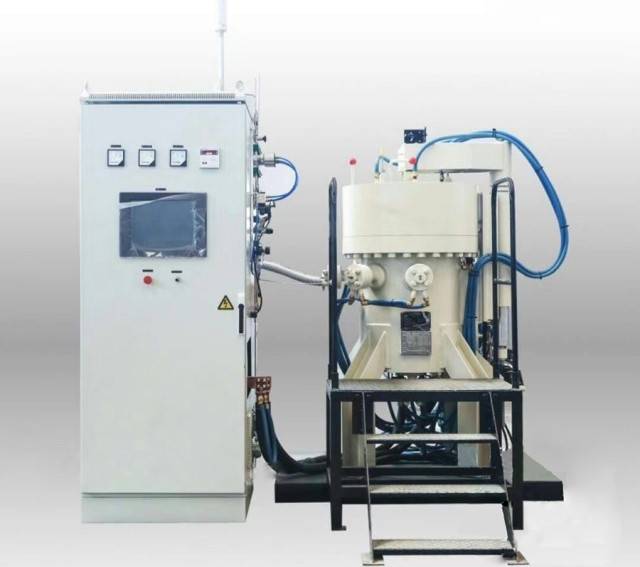
The structural design and manufacturing accuracy of these components are paramount, given the stringent demands of the hot press sintering process. For instance, parts of the furnace body that are not involved in heating and heat preservation are strongly cooled, which necessitates robust design and precision manufacturing to ensure optimal performance and longevity.
Types of Hot Press Sintering Furnaces
Hot press sintering furnaces are categorized based on their heating and pressing methods, as well as the atmosphere in which they operate. These furnaces are essential for the densification and consolidation of advanced ceramic materials, ensuring they achieve the desired mechanical and physical properties.
Atmospheric Hot Press Sintering Furnaces
Atmospheric hot press sintering furnaces operate in environments where the sintering process occurs under normal atmospheric conditions. This method is particularly useful for materials that do not react with oxygen or require a controlled atmosphere for sintering. The primary advantage of this type is its simplicity and cost-effectiveness.
Atmosphere-Controlled Hot Press Sintering Furnaces
These furnaces are designed to operate under specific controlled atmospheres, such as nitrogen, hydrogen, or inert gases. The choice of atmosphere depends on the material being sintered and the desired properties. For instance, nitrogen is often used for silicon nitride ceramics, while hydrogen is preferred for reducing the oxygen content in certain materials. This method allows for precise control over the sintering environment, leading to improved material properties.
Vacuum Hot Press Sintering Furnaces
Vacuum hot press sintering furnaces operate in a high vacuum environment, which is crucial for materials that are sensitive to oxygen or undergo undesirable reactions in the presence of air. This method is particularly advantageous for achieving high densification and purity in advanced ceramics. The vacuum environment helps to minimize impurities and ensures uniform heating and pressing, resulting in high-quality sintered products.
Heating Methods in Hot Press Sintering Furnaces
The heating methods employed in hot press sintering furnaces can vary significantly:
- Direct Heating to Die Pressing: This method involves directly heating the die or the material using electric resistance heating.
- Die in Electric Furnace: The die is placed inside an electric furnace, where it is heated indirectly.
- Direct Induction Heating: Conductive dies are heated directly through induction, which offers rapid and uniform heating.
- Induction Heating of Non-Conductive Dies: Non-conductive dies are heated indirectly by placing them inside conductive tubes that are heated via induction.
Each of these methods has its own advantages and is selected based on the specific requirements of the sintering process and the material being processed.
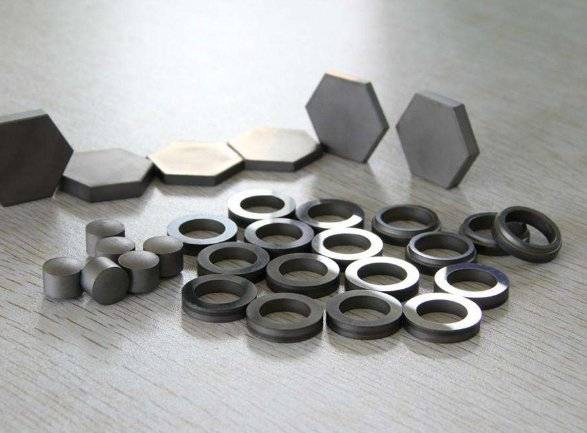
Applications of Hot Press Sintering in Advanced Ceramics
Hot Press Sintered Silicon Nitride Ceramics
Hot press sintering stands out as the predominant method for producing dense silicon nitride ceramic materials, significantly enhancing both sintering temperature and mechanical properties. This technique leverages high pressures and elevated temperatures to achieve a near-theoretical density, which is crucial for the material's performance in demanding applications.
In contrast to conventional pressureless sintering methods, hot press sintering employs a high-pressure atmosphere to prevent nitrogen volatilization, ensuring consistent material properties. This method is particularly advantageous for advanced silicon nitride ceramics, where the high temperatures required for sintering can otherwise lead to density variations.
The process of hot press sintering involves intricate steps, starting with the preparation of high-purity silicon nitride powder. This powder is then subjected to precise heating and pressurization conditions, which facilitate the formation of a strong, dense ceramic material. The resulting silicon nitride ceramics exhibit exceptional mechanical properties, including high strength, low density, and excellent high-temperature resistance.
Moreover, the structural integrity of silicon nitride ceramics, characterized by its [SiN4]4-tetrahedron network, is preserved and even enhanced through hot press sintering. This structural unit, with silicon atoms at the center and nitrogen atoms at the vertices, forms a robust three-dimensional network that contributes to the material's overall strength and stability.
The evolution of silicon nitride ceramics from their initial production in the 1950s to their current applications in fields such as aerospace, automotive, and electronics underscores the importance of advanced sintering techniques like hot press sintering. As technology continues to advance, the refinement of hot press sintering processes will likely play a pivotal role in further enhancing the performance and versatility of silicon nitride ceramics.
Hot Press Sintered Boron Carbide Ceramics
Hot press sintering of boron carbide ceramics presents significant challenges due to the material's strong covalent bonding, which is notably higher than that of silicon carbide and silicon nitride. This high covalent bond strength, reaching approximately 93.94%, severely impedes the densification process. Consequently, achieving complete pore elimination, grain boundary movement, and volume diffusion necessitates sintering temperatures exceeding 2200°C.
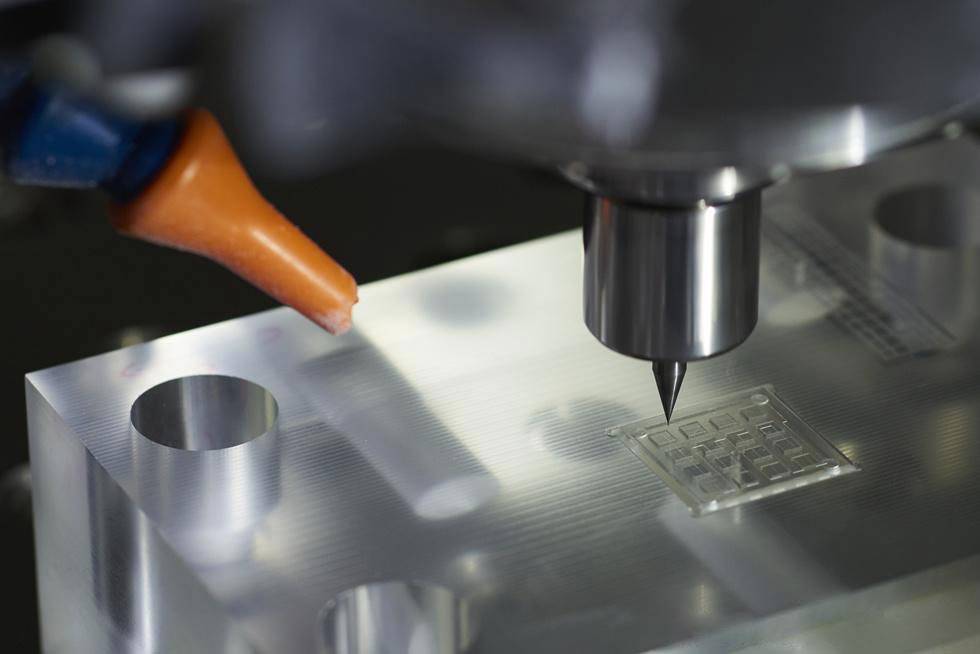
Under conventional sintering conditions, even at temperatures as high as 2250-2300°C, boron carbide powder typically achieves only a relative density of 80%-87%. This limitation is primarily due to the volume diffusion mechanism operating near the melting point of boron carbide, which accelerates grain growth rather than facilitating pore elimination. Rapid grain coarsening leads to the formation of numerous residual pores, significantly impacting the material's density.
To address these challenges, the incorporation of sintering aids is essential. These additives serve to reduce surface energy and increase surface area, thereby promoting densification. Hot press sintering, when combined with these additives, significantly enhances the densification rate, resulting in materials with near-theoretical density. This approach not only improves the material's performance but also makes it one of the most effective methods for producing boron carbide and its composite engineering devices.
Experimental data further underscore the efficacy of this method. For instance, hot-pressing and sintering at 2150°C for 10 minutes can yield boron carbide ceramics with a relative density of 91.6%. This process also enhances mechanical properties, evidenced by a room temperature Young's modulus of 292.5 GPa and a Poisson's ratio of 0.16. Additionally, the thermal properties of the material are notably improved, with a linear expansion coefficient proportional to temperature within the range of 0-1000°C, and a decreasing thermal conductivity.
In summary, the hot press sintering of boron carbide ceramics, augmented by strategic additives, represents a critical advancement in material science, offering enhanced densification and performance metrics that are essential for numerous high-demand applications.
Hot Press Sintered Alumina Ceramics
The integration of AlTiC intermediate alloy into the sintering process significantly elevates the quality of hot press sintered alumina ceramics. This enhancement is primarily attributed to the alloy's ability to facilitate more efficient particle rearrangement and densification during the sintering cycle. As a result, the final product exhibits a fine-grained microstructure, which is crucial for achieving high strength and fracture toughness.
In the context of hot press sintering, the AlTiC intermediate alloy acts as a sintering aid, promoting the formation of a more homogeneous and dense ceramic matrix. This is particularly important in alumina ceramics, where the balance between strength and toughness is often challenging to achieve. The fine-grained structure not only increases the mechanical strength but also enhances the material's resistance to crack propagation, making it more durable and reliable in various applications.
Moreover, the introduction of AlTiC can reduce the sintering temperature and pressure required, thereby lowering energy consumption and production costs. This makes the hot press sintering process for alumina ceramics both more economical and environmentally friendly. The resulting ceramics are not only stronger and tougher but also more versatile, suitable for a wide range of industrial and technological applications.
Hot Press Sintered Aluminum Nitride Ceramics
Hot press sintering of aluminum nitride ceramics offers significant advantages over traditional atmospheric pressure sintering methods. This advanced technique results in superior thermal conductivity, which is crucial for applications requiring efficient heat dissipation. The improved thermal performance is primarily due to the lower lattice oxygen content achieved through hot press sintering. This reduction in oxygen content minimizes the scattering of phonons, thereby enhancing the material's thermal conductivity.
Moreover, the microstructure of hot press sintered aluminum nitride ceramics is notably refined. The densification process during hot press sintering involves precise control of temperature and pressure, leading to a more uniform and compact microstructure. This refinement not only boosts thermal conductivity but also enhances mechanical properties, making the material more resilient and durable.
| Property | Hot Press Sintering | Atmospheric Pressure Sintering |
|---|---|---|
| Thermal Conductivity | Higher | Lower |
| Lattice Oxygen Content | Lower | Higher |
| Microstructure | Improved | Less Refined |
In summary, hot press sintering stands out as a superior method for producing aluminum nitride ceramics, offering enhanced thermal and mechanical properties that are essential for high-performance applications.
Related Products
- Vacuum Heat Treat and Sintering Furnace with 9MPa Air Pressure
- Vacuum Hot Press Furnace Heated Vacuum Press Machine Tube Furnace
- Vacuum Hot Press Furnace Machine Heated Vacuum Press
- Manual High Temperature Heated Hydraulic Press Machine with Heated Plates for Lab
- Automatic High Temperature Heated Hydraulic Press Machine with Heated Plates for Lab
Related Articles
- Vacuum Hot Press Furnace: A Comprehensive Guide
- Comprehensive Guide to Spark Plasma Sintering Furnaces: Applications, Features, and Benefits
- Exploring the Advanced Capabilities of Spark Plasma Sintering (SPS) Furnaces
- Top 5 Features of a High-Quality Zirconia Sintering Oven
- Spark Plasma Sintering Furnace: The Ultimate Guide to SPS Furnaces
